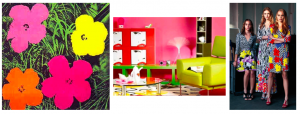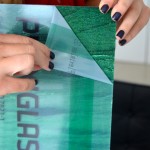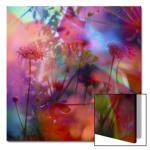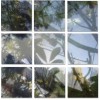Art doesn’t just get up and walk away. It struts. It struts down the catwalk, to the sidewalk, and into our homes. Fashion is art, and art is fashion.
Anyone who has ever met me knows that I love fashion. Every morning, when I enter my closet to get dressed for the day, my creativity is sparked. The excitement of incorporating different colors and textures and sometimes even styles prepares me for what I will encounter during my day at the office. The simple process of getting dressed has become, for me, an artistic process. Even though the final product is what seems most rewarding, the process of getting dressed is truly the best part. Fashion has made each of us artists in our own merit. Each accessory works like a brushstroke in the final masterpiece that is your outfit for the day. In this way, the art of dressing becomes just as expressive as a fine art work.
This creativity is not limited to fashion, however. Interior design is a form of self-expression, as well. A good look at your interior space should give you just as much pride and confidence, as a look at your reflection in the mirror after you get dressed in the morning. Each require the same amount of care, taste, and thought.
The connection between art and fashion has become deeper over the years. That bond has become more explicit with the immersion of the contemporary fashion world into that of museums. The epitome of this notion is the Metropolitan Museum of Art’s annual exhibition dedicated to fashion as art. Yet, fashion has not only become part of public cultural displays, but has also permeated the world of private decoration.
Trends cross over from the runway to the home so quickly, they occur almost simultaneously. In this way, interior design trends mirror fashion trends. This is evident in the work of fashion designers worldwide. Patterns, colors, and themes in fashion reflect those in art and design. The convergence of these elements has blurred the line between what is considered art and what is considered fashion. This, in turn, has converted our interiors and our wardrobes into canvases. Fashion and interior designers have picked up on this and have begun welding design trends with artistic influences, recreating masterpieces, in ways that allow the public to celebrate them as more than just visual art.
Inspired by Piet Mondrian’s grid paintings, Yves Saint Laurent thought outside the box, and created a collection of mod dresses. The abstract movement, which Mondrian was a part of, blended exceptionally with the minimalist fashion that followed. Then, this “Less is More” mentality was brought indoors, and is used by interior designers. Drawing on Mondrian’s use of grids, these minimalist and color block styles are frequently used for interiors, and are especially popular for bringing color to the walls of a room.

In the same way, Jackson Pollock’s “drip painting” technique has been the inspiration for various design collections. His style can be seen splattered across magazine pages, runways, and homes.

Recently, the combination of two greats brought Pop Art to the runway. Diane Von Furstenberg incorporated the prints from Andy Warhol’s famous flower paintings and silkscreen prints to put a new spin on her signature style, creating a limited edition collection of wrap dresses and handbags. These bright pops of color and the repetition of shapes and patterns crossed from the runway into the home, and Andy Warhol continues inspiring not only fashion designers, but also interior decorators.

A heightened interest in geometric shapes has brought a whole new meaning to the phrase “being square”. Squares, circles, and triangles dominate this bold trend. A modern spin has been placed on the use of these shapes in design, and they are again becoming the inspiration not only for fashion and home decor, but also for make up trends. Combining these geometric elements with bright colors makes for a daring, modern look.

No matter what inspires you, the one thing that matters is that you are inspired. Whether you choose to combine different movements, trends, and styles, or stick to one, you must ensure that your art, your outfit, your space is what you want it to be. Your art should say what you feel. Your art should reflect who you are.
Marc Jacobs said, “Clothing is a form of self-expression - there are hints of who you are in what you wear.” Here at Map Acte 3, we say, “Your space, your wardrobe, your art are forms of self-expression - there are hints of who you are in what you create.”
We hope you continue to express yourselves. We hope you continue to create. We hope our artwork will help you speak from your art!



















































